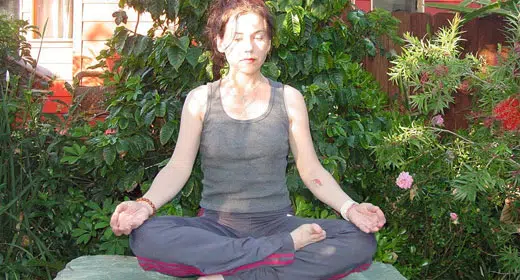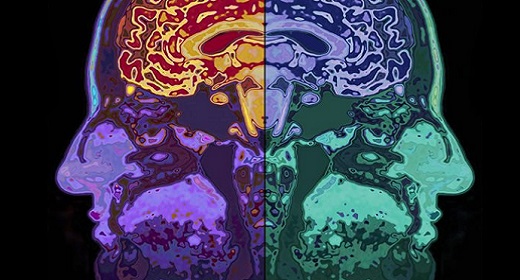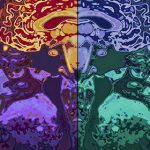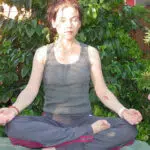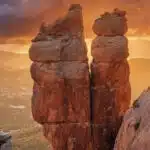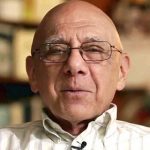Dr. Clarissa Pinkola Estés: July 13, 2010 “Over these many decades, I find unequivocally that each person has a unique one-of-a-kind way to speak/write in their own voice,
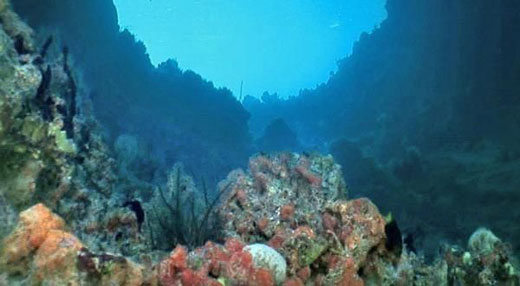
from their own experiences and fantasies. “In this sense, each person decides to go whichever way they like, or feel called to, in whatever pattern… depending only on what they themselves wish to accomplish or feel most fulfilled by in speaking, performing or/and writing.
“There is a long tradition of original voice. For instance, like their written works or not, Bret Easton Ellis has his own voice, as does Stephen King, as does The Buke, as does DiPrima and Ginsberg, Sexton and Teasdale and Dickenson. One would not mistake one for the other.
“My friend, the late Kurt Vonnegut, had a charism of personal voice and imagination. Alighieri’s voice is different than Yeats or Blake. Rumi is distinct from Kabir (Persian poets) who is distinct from Mirabai (Northern Indian poet).
“Stafford is different than Bly, though both are prairie poets. Alegria is different than Paz, who is different than beautiful Opal Whitely, who is different from the masterful Koch or the rebellious Sor Juana. Jung is way different than Freud, and Toni Wolff is differently voiced than either.
“I give you only a tiny sample above to speak of those who strove for/ dared to speak and write in original voice… this coming about by their investment, immersion in their personal interests, by way of speaking/writing in wild ways that came to them naturally, by truthtelling, by not sequestering knowledge or imagination, by leaving the constraints of ego, by speaking/ writing from their own life experiences and quandries, and by following through a dark woods, something that is sure-footed.
“I often see that one of the proofs of wild and natural voice seated well, is that though whatever we write or speak takes craft and is hard to do, even so, often also what we write or speak surprises us in some useful way each time we truly unleash.
“Then is when we think things, say things, write things we never could have thought of solely from ego… or when we were closed down, or trying too hard.
“I’d mention too one of the great secrets of writing and speaking… one that most writers and speakers either never speak of, or else only allude to, and that is:
“Sometimes, if we allow the gates that ego and culture pound down over most all creative freedoms… if we allow those gates to open (recommended), or blast them off their hinges (also recommended as needed ) an inner teacher, or a winged creature, or a little monastery of monks or nuns appears (choose your own image as you see it/them).
“These represent heightened intuitions about how to/what to write and/or speak next. These energies are deep in the work ‘with’ us. The old fashioned word for them is daemon: guide. There are other words as well, some less of spirit and more of earth.
“You will hear some novelists, for instance, say ‘the character took over the writing.’ This is code, for the writer being in wild voice and thought… being gateless. This is code for a daemon came near and thus became co-creator with the writer.
“You can perhaps see why some artists might not want to speak at length about such truths of spirit that they themselves have directly experienced. For some who have not yet been to hell and back nor seen angels, might think us all mad, or that Miss Millicent drinks a bit.
“Yet often only in heaven or in hell or from heaven or hell, does one get the bones to write with and upon, the clothing with which to fill out the characters. Yeats was our fellow traveler when he wrote, “Now that my ladder’s gone/ I must lie down where all the ladders start/ In the foul rag and/ bone shop of the heart.” With emphasis on rag and bone shop of the heart, where so many of us create from.
“So, stalwart and onward we go.
“These many ways of writing/ speaking/ creating are within the reach of all. But, for a price. The price is pulling away from ego and the overculture’s mufflings, and instead practicing creating without unreasonable restrictions in place that confine one’s creative potential to only ‘safe,’ manageable, acceptable somehow, not too risky outputs.
“I once was fired from a small neighborhood newspaper that had hired me to cover the arts beat in town. I only published one column before I was kaput. The editor and I remained friends all these years after ( and he was bowled over by subsequent publishing of wwrwtw a couple years later. “Didnt know you were a real writer,” he said in sweet/sincere apologetic voice.
“But, before that, when I had brought in what was to be my one and only column, he told me that my um style did not ah, match with uh, a small neighborly newspaperly er newspaper.
“So, I was ‘let go’ for writing about a so-fine jazz guitarist I’d just covered… that he churned his gut (strings) to butter, and made people jump and dance right out of their clothes.
“Ok, ok. It’s a little over the top for a neighborhood in which lived at the time more than a few upstanding elderly hairnet people, some blessedly smart and sweet, and ah, some not. I hope you are laughing with me. But within a couple weeks, some of the neighbors had buttonholed the editor on the street saying things like, ‘Hey who is that new voice, never heard anything like her writing before, more more’… well, safety, limiting risks somehow won that day.
“But nonetheless, stung and sad for a time, I managed to at least halfway buckle on my pistolas again, and took a deep breath and vowed, though probably not with as much confidence as Miss Scahhlett, ’I live to fight another day.’
“And so and thus we go on, we all go on… all us stubborn, liquored up on soul and riding the mustang of wild voice, go on.
“In some ways, there is no more to say than that, for practice, practice, living on the edges, creating past the edges is the writer/ speaker’s center of work.
“Thus, the next step in the practice is to practice, and daily.
“And how one does that? Truly, those decisions come under the category: ’to each her own’, ‘to each his own.’ You know your own way best, and if you’re lucky maybe sometimes too, you’ll come into contact withsome decently wise and kind curmudgeon or crone who lives at the side of the poetry road, and they might, if you sign up seriously, walk with you for a while. And yet, only if you see fit.
“Writers, speakers, actors, performance artists, storytellers come to study with me because they want to learn and/or deepen ‘original voice.’ I dont teach ‘motivational techniques’ to make a person stand out… Nor do I teach original voice. I conjure it instead, I push, pull, draw, evoke it out of others.
“How? Ah, therein lie the secrets. Cackle, cackle.
“Uno secreto: I offer a vision and a mirror, ways and means to teach the instrument that each person has been chosen by… or taken up… or been given… ways and means that take the learner to the nth and most finessed degree possible… the intention on all sides, only being this: to reach other human beings, to truly communicate with at least one other soul.
For many who study original voice consistently, there is desire and destiny, both. But first lessons? Layers of overculture’s overlays covering original voice often have to be peeled away, sometimes hard chipped off with gentle but firm chisel of confrontation… for ideas antithetical to free creativity are so tightly glued onto the person’s mind … they are often hardly aware of the insidiousness of them… yet these glued down laminates inhibit free expression, ways of being and telling… that are far greater than ego alone.
“I’d just gently offer that at college fine art school long ago (when i was young, that is, loooooooong ago lol) that my friends who were students there (while I was going to hairdressing school) were encouraged to paint ‘after’ the hundreds of masters whose works were hung at the Chicago Art Insititute.
“This was honest endeavor… their paintings would be signed, by so and so, ‘after Rembrandt,’ or ‘after Goya,’ or ‘after Velasquez.’ We used to laugh together with good will, because most of the time, one may not have had to sign ‘after’ anyone as many student paintings in no way approached the finesse of the masters.
“So, students were/ are encouraged to make derivatives to learn brush work, to pay attention to caravaggio lighting, or scumbling, or pointilistic technique or whatever else, but only to a point, and only for a limited period of time, while at the same time doing non-copy/ non-deriviative works of their own that come purely from imagination and one’s own odd and wondrous inspiration, developing their own one of a kind style and mastery.
“So too, with my own students these many years, I hold to similar time frames. Learn someone else’s phrasing and voice if you like, but only for a period of time. After that, give yourself over to study original voice.
“In that study, I will want my young/midage/ elder writers and speakers to step to the high dive, no safety net, just their own senses and angels, taking flying leaps, many climbings and leapings. I will not ask anyone to dive from altitudes that I have not dove from in graceful and bellyflop ways myself.
“But it’s in taking the dives, that the form of free voice unbound at last, is learned; the exhiliration of it, the originality of it. I drive home time after time this singular question:” How do I know what I think til I see what I say?” Write/say… anything, take a chance, go high and wide and deep. Let us see what you really think by seeing what you say when you are in free fall, rather than on walking along on relatively safe ground only.
“I teach exercises I’ve developed re original voice, these in the main having to do with paying attention to one’s body, and one’s angels… that is, one’s subtle psychic impulses… and literal practices to unseat censoring, the judging of content or process, worrying about impact whilst creating in dead heat.
“Also, when I’ve taught small groups, the other writers are able to say immediately if another writer has hit it en puente, or sounds in content, process or voice, like x, rather than like themselves. This is valuable, kind and supportive mirroring to all concerned, not just the person doing the ‘floor work’ at the moment.
“I have never found that souls learn best by being abused, or treated harshly, being carelessly critiqued ‘for their own good.’
“Rather, I think by guiding with hard truths and soft kindness– when asked– and that is critical, ‘when asked’ …people make far more progress in whatever they’ve set for themselves in bringing forth new life that is one of a kind, with its own temperament, architecture and voice.
“I make it a practice not to comment on people’s content, never tell people their work is good, bad or indifferent. I only comment on process, ask questions, ask people if they are being true to their angels, asking who they hear in their souls, and deepening the relationship to the guiding Self. This is not only enough, it is way, way more than enough. The effort has to be put into doing the work while doing the work.
“Although I’ve not taught small-group performance, writing and speaking for several years now as I’ve been bringing several of my own long works to fruition…. I am gearing up to do so again not too far down the road…and as I look back over my own life, over these years, I see in my learners as in myself, that there are so many ways to move in creative life, including beautiful stylized ways of writing /speaking that hold to strict forms, for instance like ghazals, haiku and many other forms. I love ghazals, even though I’m never sure how to spell the word correctly.
“Yet, too, often the unbound mind, the unfettered soul will create original forms of its own if allowed and encouraged, like the pattern created by the artists before soldering down the brass channeling for a cloisonné piece of jewelry.
“Then afterward, one pours the colorful melted vitreous glass of words and duende (*the goblin spirit of creativity) into the channels… and at first, some might spill or blur, but young hands, with practice, soon become old hands at arts like these.
the Then, with more and more practice yet, and with freedom to place whatever colors we deem best into patterns we design ourselves, we find our ways in a new and original manner.
“When next I teach, I will return again and again throughout to this groundnote: offering to each learner, that when the time comes in our work together, and only by each learner’s own consent, they will be given gentle prods — until ready, set, go….whoosh– off the high dive they go… into the… swimming pool? Well maybe at first, but ultimately, off the high dive into the oceanic…
“for you see, in addition to clear practices, honed skills and wild courage one learns on dry land and by flying through the air… there is as much, and often far more treasure to be discovered and gathered up …during those long moments under the water.”
Blessing down hard on your creative life,
and with love, dr.e
(from “Tending the Creative Fire” manuscript by cpe)
Dr. Clarissa Pinkola Estés
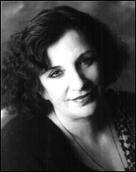
Chapter excerpt “ABOUT ORIGINAL & WILD VOICE IN SPEAKING AND WRITING”, from “Tending the Creative Fire manuscript” by Dr. Clarissa Pinkola Estés © 1989, 2010, All Rights Reserved. This particular work may be used non-commercially as long as it is kept entirely intact, not added to nor taken from, and this complete notice including usage, author’s name and copyright notice are clearly printed upon it. Other permissions ngandelman@aol.com

